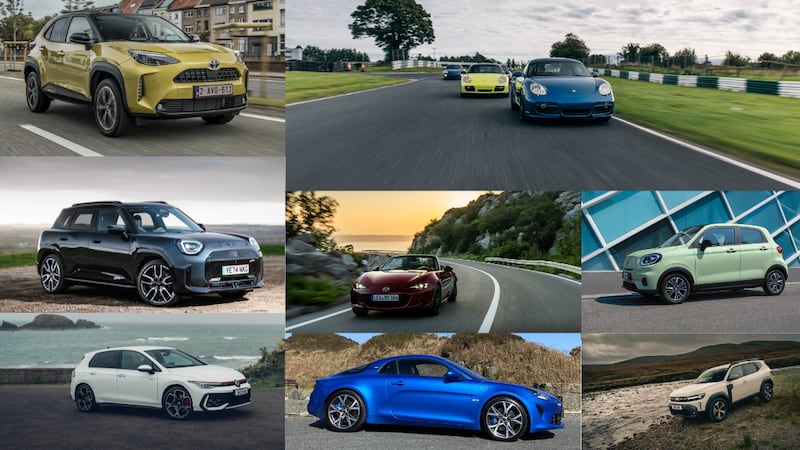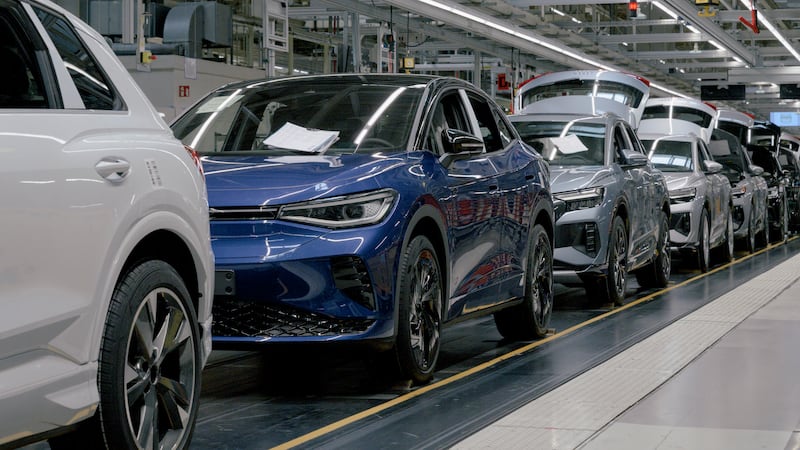Our first chance to drive the new Range Rover Sport has come sooner than we might have expected. It had its world debut at the New York auto show just over a month ago, yet here we are in the UK, at Land Rover’s Gaydon test track, looking at a prototype with its driver’s door open and engine running.
This is a seriously important new car for Land Rover. While the smaller Evoque might be the firm's new top seller, the Range Rover Sport previously held that crown despite its high price. It generates vast profit-per-car for Land Rover, and is so popular in the emerging markets central to the brand's recent success that sales of the old model actually went up as it was about to be killed off.
While we’d reiterate our usual reservations about driving a prototype on a test track in circumstances controlled by its manufacturer, two things reassure us. First, if you were presented with this late “tool-test” prototype at your dealership in a few months time, you’d sign the cheque. Fit and finish was perfect. Second, the character of the Range Rover Sport is so different to that of the Range Rover that even a drive on the confines of a test track is immediately, abundantly informative.
So you climb into the driver’s seat, noting its Italian supercar look before you settle in, and you eyeball a cabin that owes some of its aesthetic to the Evoque but its quality of construction and material to the new Range Rover, and in turn to a Bentley. You sit lower than in the outgoing Sport, but still higher than in the rivals for that hallmark Land Rover “command” driving position.
The exterior has also swapped its boxy, slightly militaristic look for something slippier and more elegant but your view out still includes those classic Range Rover “castellated” corners.
Biggest engine
Lever back to "D", eight-speed automatic gearbox into first, and the 510bhp, 625Nm, 5.0-litre supercharged V8 comes out of stop-start, system-induced sleep mode. This is the biggest engine in the range and even at low speeds the air-sprung ride is noticeably stiffer than in the cloud-like Range Rover; there's more aural and tactile patter and a greater sense of connection with the road. This is on 21-inch rims: 19s to 22s are also available. It wasn't intrusive or uncomfortable on our brief drive, and with the car in its default setting it felt like it will make good on the engineers' aim of making a "sports-touring SUV" with long-range comfort as its chief attribute.
But don’t think the Sport, with its new, optional powered third row of seats, is going all soft and “family”. That default setting? There’s an alternative. For the first time, you can select a “Dynamic mode” on the rotary Terrain Response controller on the centre console. In the same way that it optimises other Land Rovers’ systems for mud, boulders and sand, it can now tune your Range Rover Sport for fast road driving too, altering the all-electric steering’s weight and response, the adaptive damping and roll control, the powertrain map and the torque-vectoring electronic rear differential.
Striking difference
The difference is as extensive and striking as the Dynamic Mode on the new F-Type from sister company Jaguar which we tested for the first time just a few weeks ago; when it's engaged the Sport shows how different it is to the Range Rover. It's 75 per cent different by parts count, but it feels more marked than that on the road.
First, the steering. While the big car has an impressively incisive helm, the Sport provides instant response, jinking into corners like a car two-thirds the mass yet remaining level and avoiding the slight “topple” of the taller, softer Range Rover; that’s your pay-off for the firmer ride.
Second, the acceleration is borderline savage; the sharpened throttle response and keener downshifts mean a floored throttle will genuinely snap your head back, and it’s under full steam that you most notice the claimed departure of 420kg with the adoption of the bonded and riveted aluminium body in white. 100km/h is reached in an entirely believable 5.3 seconds and even at its 225km/h maximum – which it hits in a remarkably short distance, and 250kph is an option – the Sport feels as planted and unperturbed as a fast German estate car; important in that market.
Reservations? Initially, only that those seats could use more lateral support (but that’s only because you now want to keep your foot in through a series of bends) and the engine note could be richer and louder inside. I thought the slightly muted Range Rover Supercharged was leaving the Sport somewhere to go, but again it’s those outside that get the best tunes.
Land Rover claims it has hard data to prove its new car handles 30 per cent better than before, and that it has made a car with two feet of suspension travel and “staggering” lap times at Germany’s benchmark Nurburgring race track. On first, brief acquaintance, its claims are credible.
OUR VERDICT : Range Rover Sport just got even better on the tarmac














